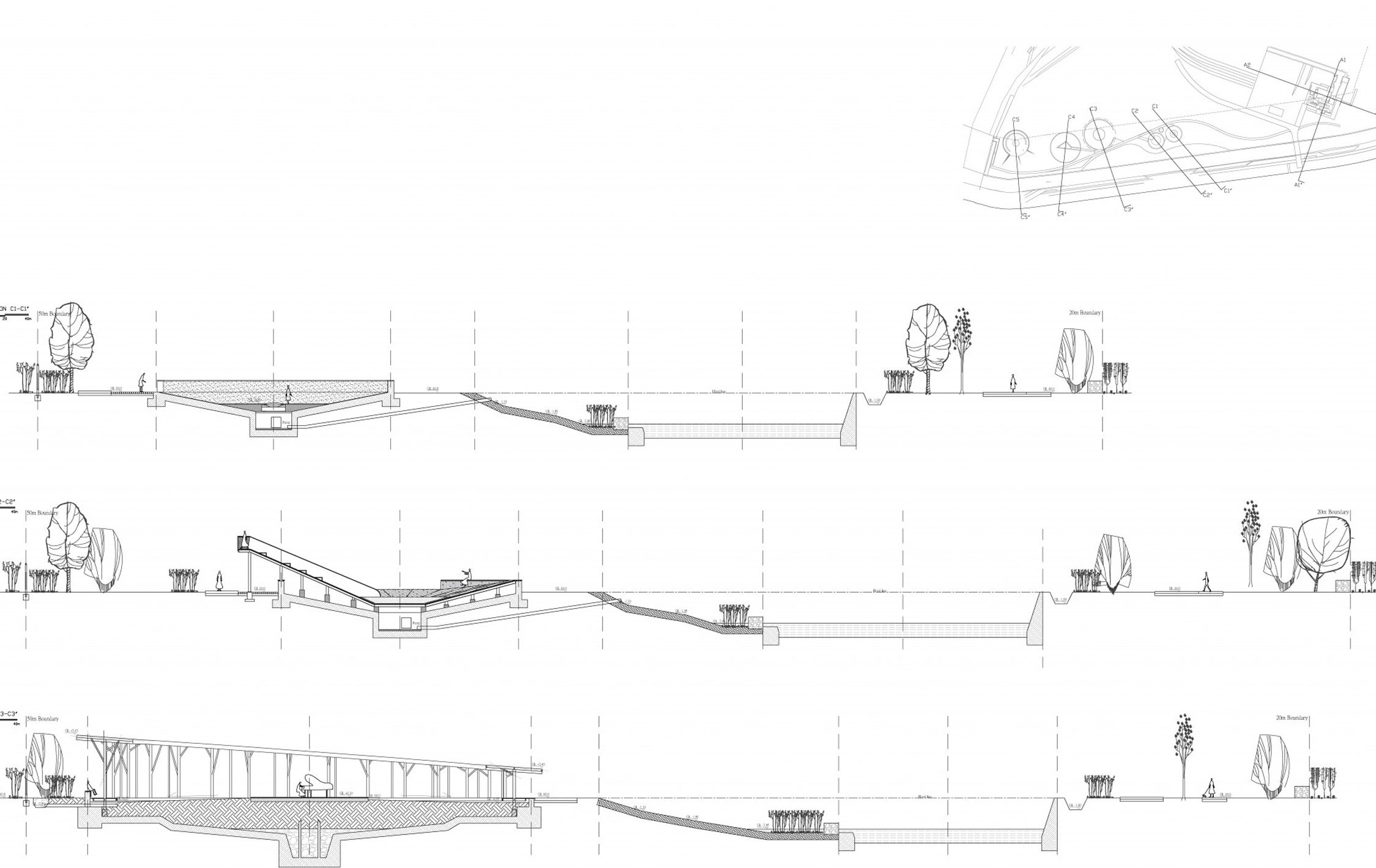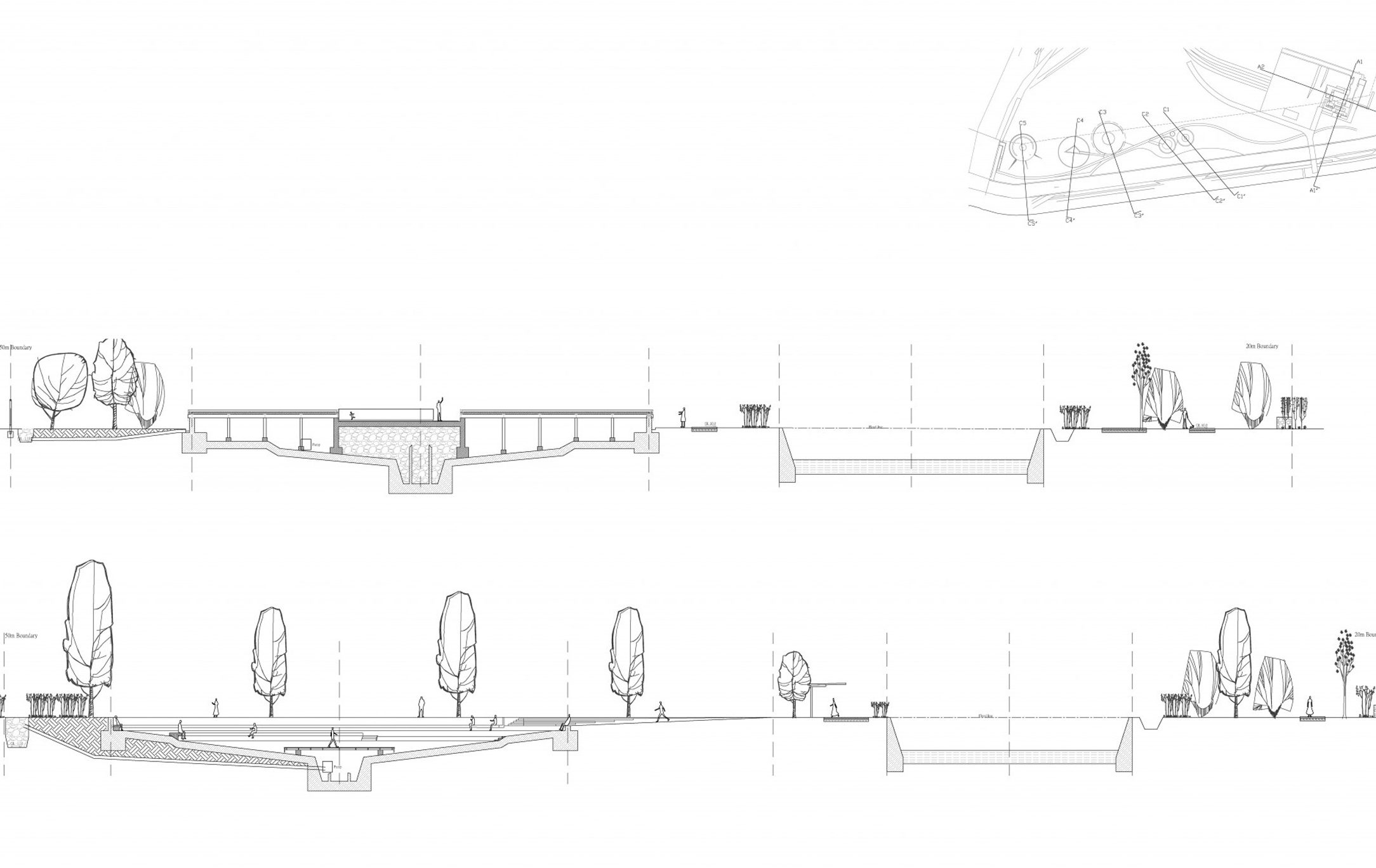ECG INTERNATIONAL LANDSCAPE CONSULTANTS FROM TAIWAN RENOVATED THE DESERTED SUGAR FACTORY INTO HEITO 1909, A PUBLIC PARK THAT REPRESENTS SIMULTANEOUSLY BOTH URBAN DEVELOPMENT AND CONSERVATION OF OLD BUILDINGS
TEXT: PRATCHAYAPOL LERTWICHA
PHOTO COURTESY OF ECG INTERNATIONAL LANDSCAPE CONSULTANTS
(For Thai, press here)
Urban development sometimes means demolishing old buildings to make ways for new ones. But ECG International Landscape Consultants, a Taiwanese landscape architecture firm, believes that urban development and conservation of old buildings and their valuable stories can be a simultaneous occurrence. Such an approach is expressed in HEITO 1909, a public park project in Pingtung, Taiwan.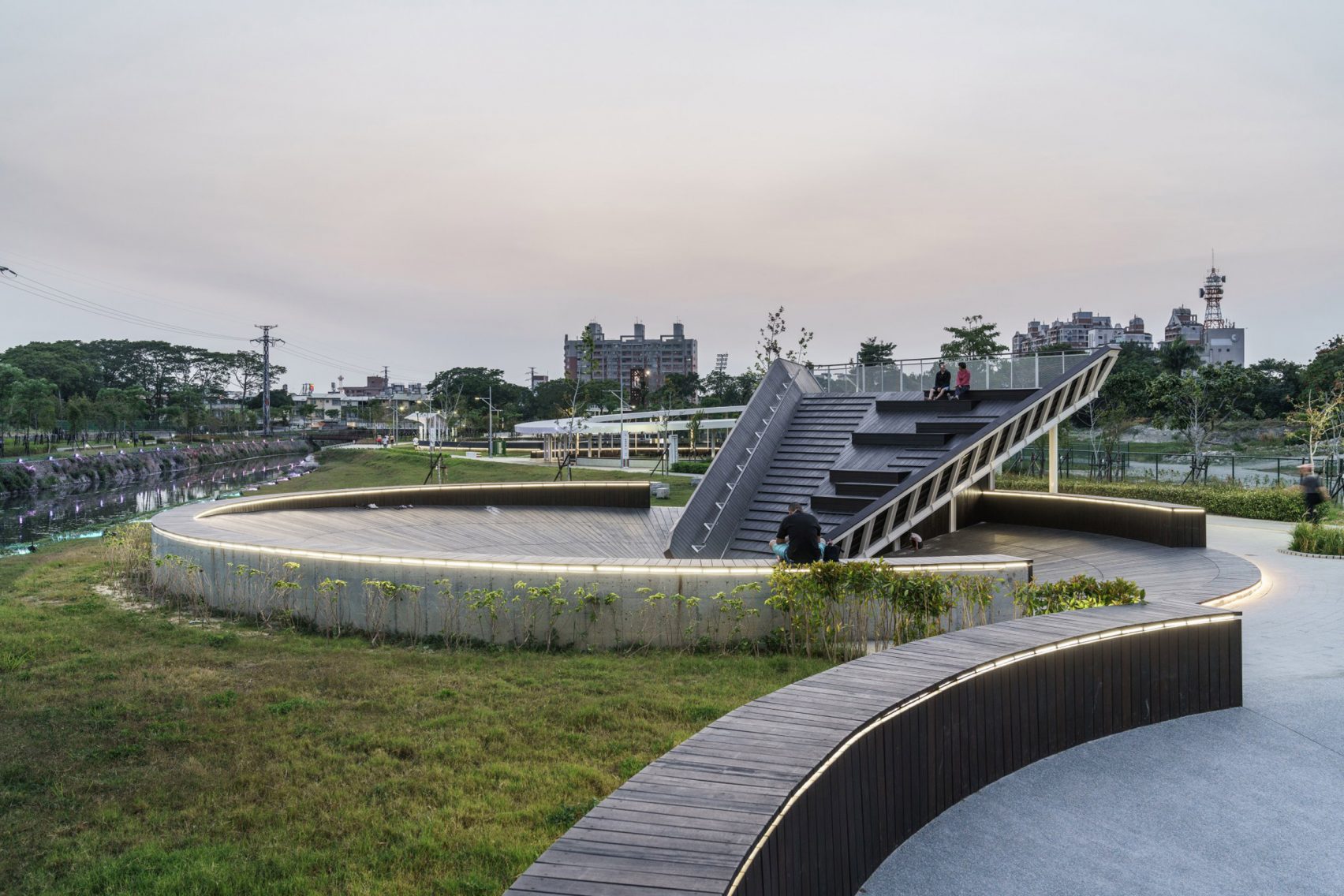
HEITO 1909 is the renovation of an old, deserted sugar factory situated at the center of Pingtung into a public park that intends to improve the citizens’ quality of life.
The waterway rests along the garden, which is home to a cluster of spaces renovated and extended from the sugar factory’s original structures, reminiscing the place’s industrial past and recounting the city’s own history.The word ’Heito’ is actually the city of Pingtung’s old name, taken from the time when Taiwan was colonized by Japan.
One of the examples of this attempt to dust up and revive this old built structure reveals itself in the form of an open sunken courtyard that occupies the underground floor of the factory. The architect works with the space by readjusting the ground level for the public to easily and safely access the park. The original structure is reinforced with additional decorative elements of arches and a model of the sugar factory made of distressed, rusty steel.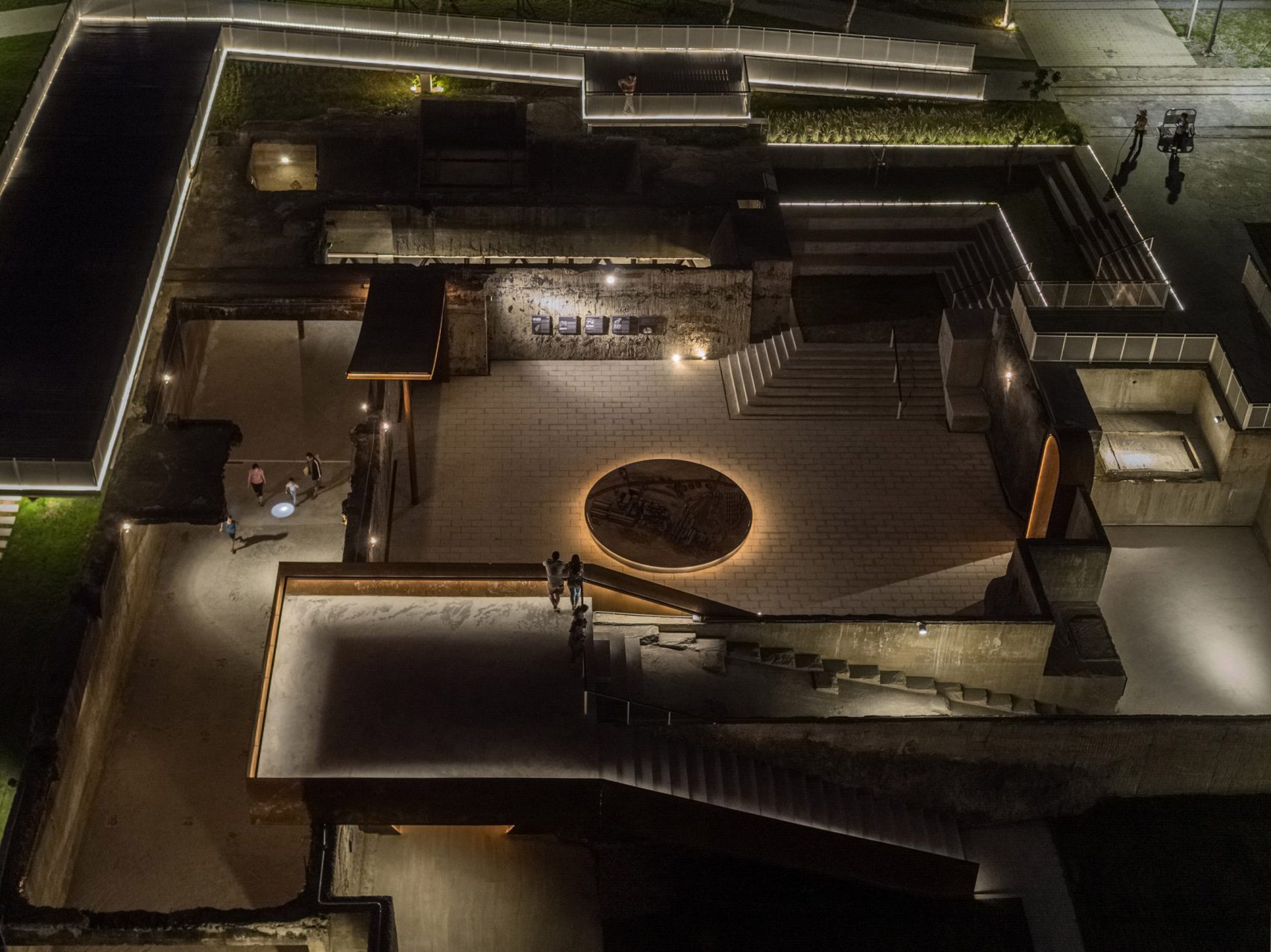

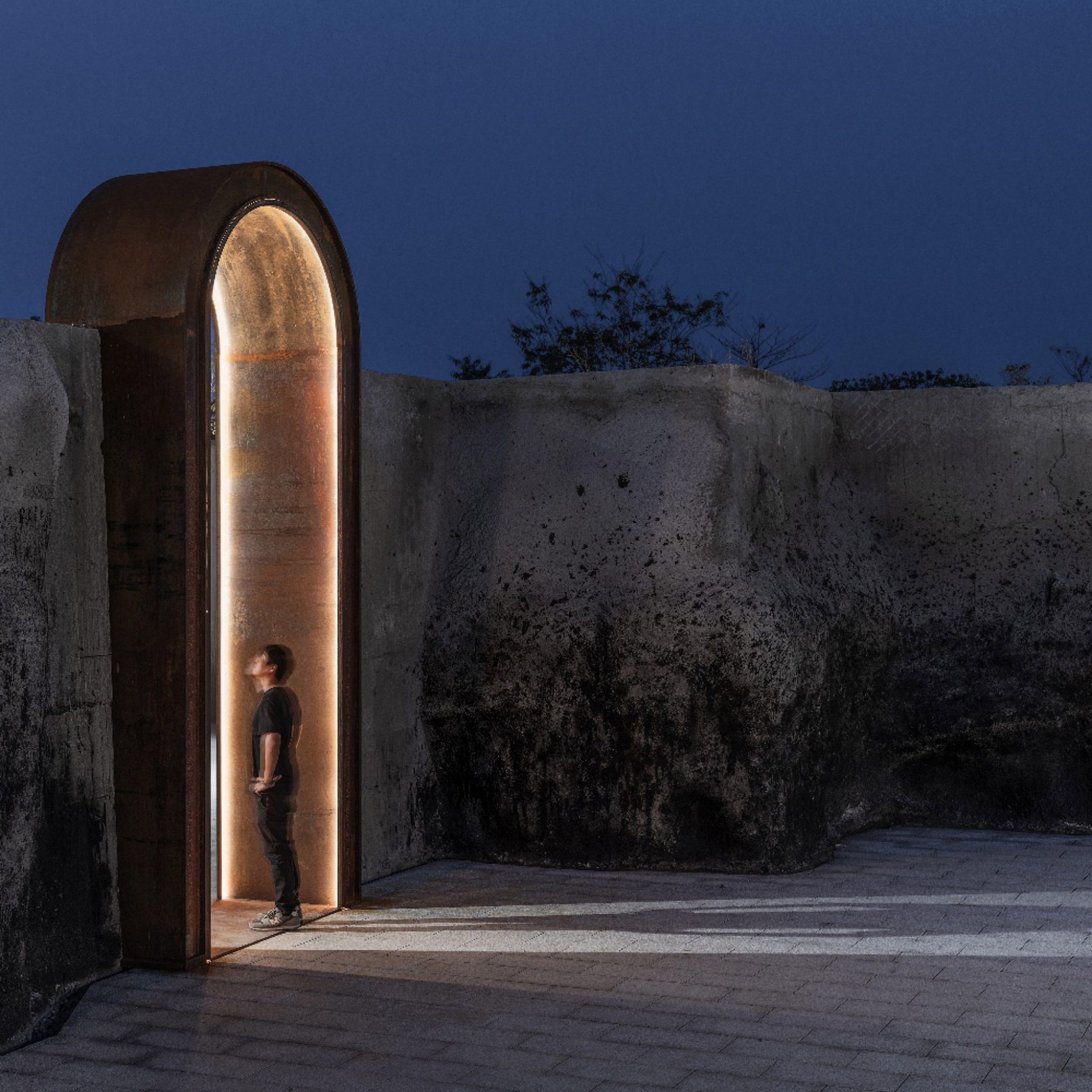
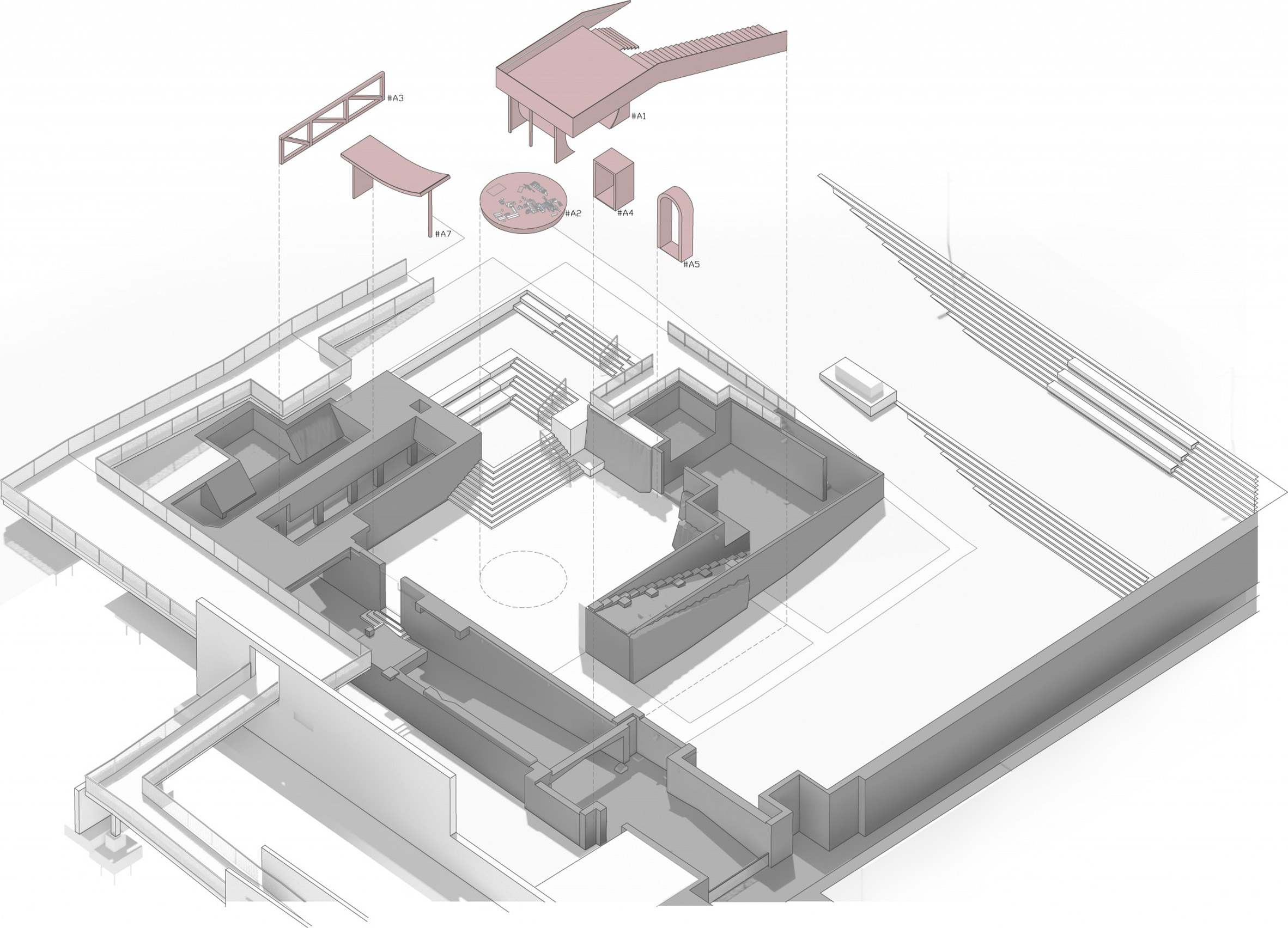 The old circular water treatment concrete pond went through a transformation and turned into various types of spaces such as a sandbox and a playground, designed to have a certain degree in inclination, enabling children to climb upward and downward. Also included in this particular part of the program is a round shape pavilion with white columns looking like erected bamboo steps, and the glass ceiling reflecting the plane of the floor, connecting the flow between the plane of the floor and the higher level. The architect designs the pavilion to symbolize the bamboo pavilion that the factory workers built for Hirohito Emperor on the occasion of his visit at the factory in 1932.
The old circular water treatment concrete pond went through a transformation and turned into various types of spaces such as a sandbox and a playground, designed to have a certain degree in inclination, enabling children to climb upward and downward. Also included in this particular part of the program is a round shape pavilion with white columns looking like erected bamboo steps, and the glass ceiling reflecting the plane of the floor, connecting the flow between the plane of the floor and the higher level. The architect designs the pavilion to symbolize the bamboo pavilion that the factory workers built for Hirohito Emperor on the occasion of his visit at the factory in 1932.

Another water treatment pond was improved and refurbished into a reflecting pool with the reflection of Da-Wu mountain, one of the most significant symbols of Pingtung, on the water’s surface. A walkway is built to lead up to the center of the pond, creating a serene feeling of swimming through the water. The project is a beautiful amalgamation of the past, present and future, all the while reviving the once polluted industrial site into a space that has eventually become a part of nature over.
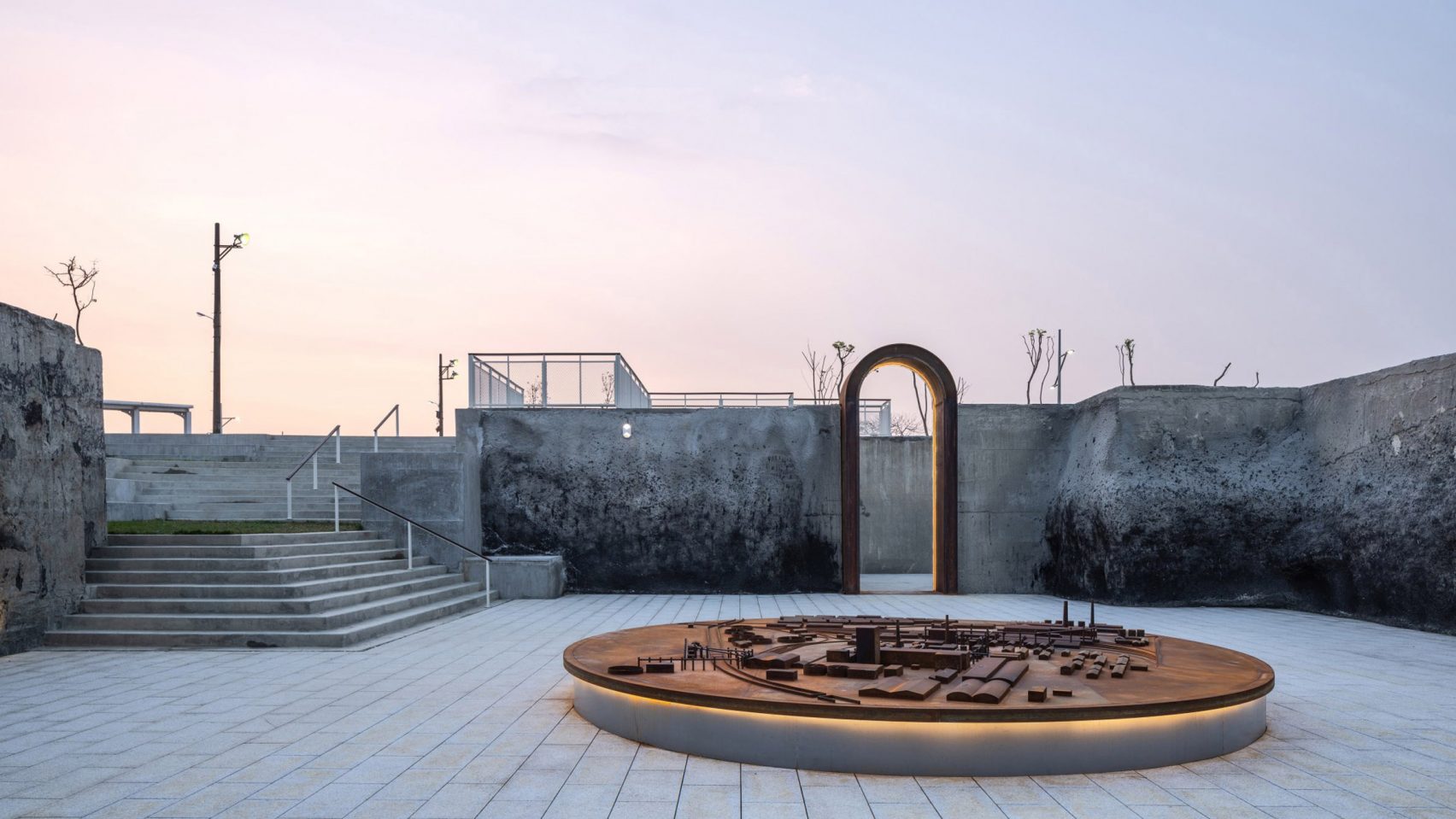 facebook.com/1988ECG
facebook.com/1988ECG



